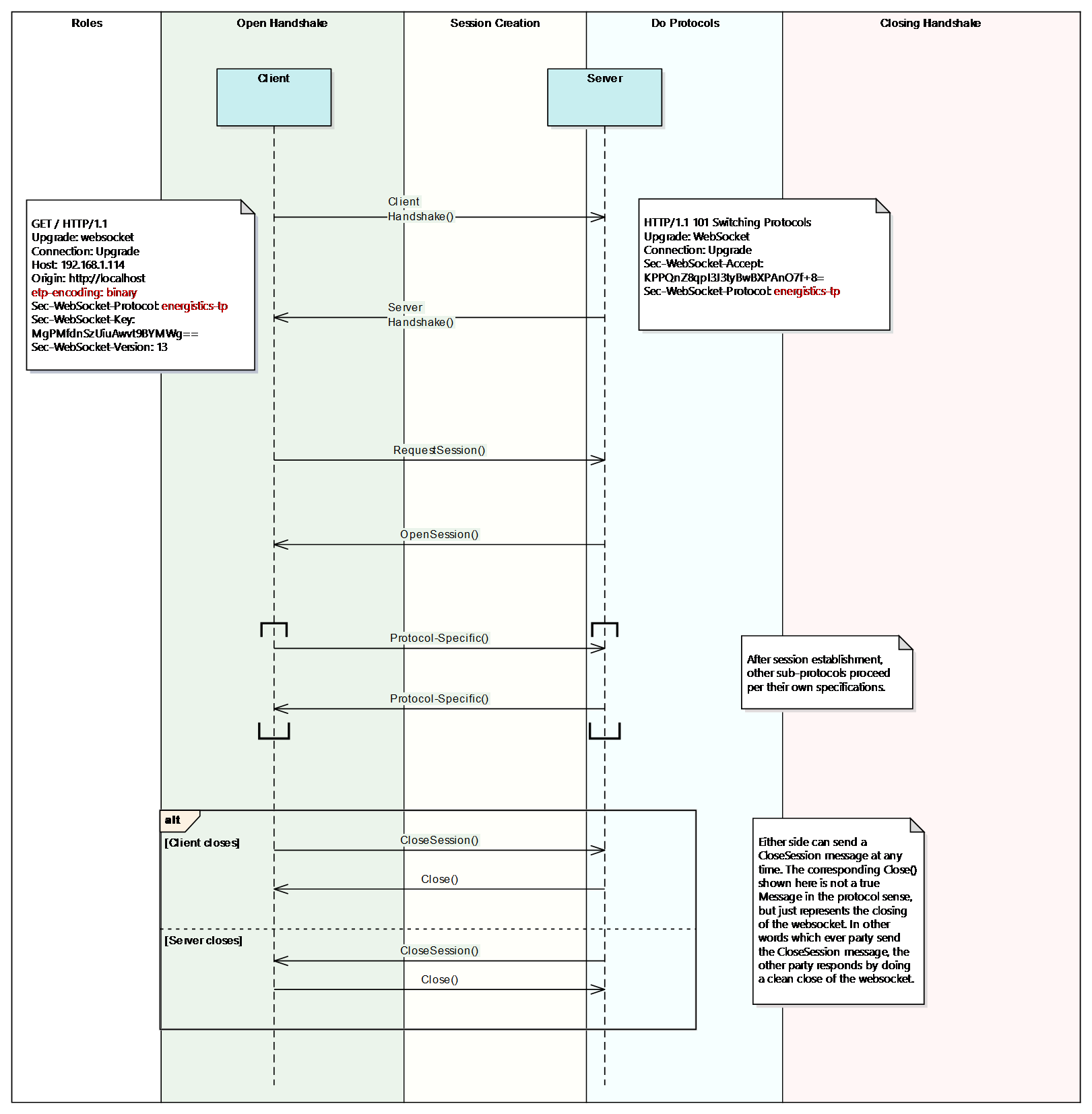2.1.1 Requirements for Core Protocol
| Topic Version | 1 | Published | 10/31/2016 | |
| For Standard | ETP v1.1 | |||
|
Requirement |
Type |
Description |
|---|---|---|
|
Message IDs |
Behavior |
Message IDs MUST be:
The IDs used by clients and servers are completely independent of one another. Put another way, the 'primary key' of any given message could be thought of as the sessionId + agentType + messageId. Note also that there is specifically no requirement for message IDs to be sequential or for any correlation between message IDs and any particular sub protocol. |
|
Protocol Negotiation |
Behavior |
|
|
Session State |
Behavior |
a) The session UUID. b) The current highest-valued message IDs (for client and server). c) The state of currently-active multi-part messages. d) All of the SupportedProtocols information from Open Message. |
|
Session Survivability |
Behavior |
The following applies to all servers that are capable of maintaining history.
|
|
Token Expiry |
Behavior |
As discussed in Section 4.2 of this specification. |
|
URIs |
Behavior |
All URIs MUST be URL-encoded. |

This interaction diagram describes the normal sequence of message for an ETP session:
- A client begins with the standard WebSocket handshake and the server responds by doing the upgrade from HTTP to WebSocket. For more information on the handshake, see RFC 6455 (https://tools.ietf.org/html/rfc6455 ).
Specific to ETP, the client MUST specify the Sec-Websocket-Protocol header value of energistics-tp, and the server MUST reply with the same. The client MAY also supply the custom header of etp-encoding with a value of binary or json, which specifies the Avro encoding style to be used for the life of the connection.
- If this header is not present, the encoding is assumed to be binary.
- All protocol header names and values are case-insensitive.
HTML5 Web browser clients cannot currently add custom headers to a WebSocket request, and thus may include the etp-encoding header as a query request parameter. Servers MUST accept and process this value. In the example below, instead of GET / HTTP/1.1 the first line of the request would read GET /?exp-encoding=binary HTTP/1.1. If the server does not support the requested encoding, it MUST reject the upgrade request with HTTP status code 412 (Precondition Failed) and the client can try again (if it wishes) with the alternate etp-encoding value.
- A client then sends a RequestSession message. This message consists of a list of subprotocols that the client intends to use on this connection, along with a key/value map of configuration parameters for each subprotocol. The names of allowable keys are strictly controlled by this specification and defined for each subprotocol.
- The requested protocols are started and message passing begins. The sequence and interaction diagrams for each are in the subprotocol sections below.
- If the server cannot support all of the requested protocols, it MUST respond with a list of the requested protocols that it does support, leaving it up to the client to decide whether to continue with the session.